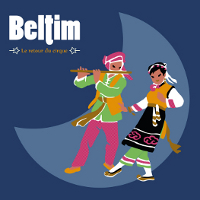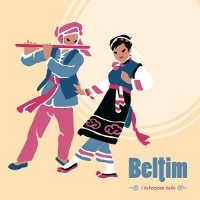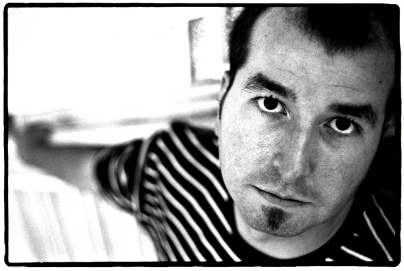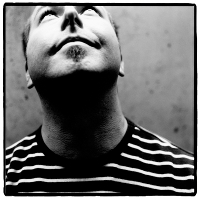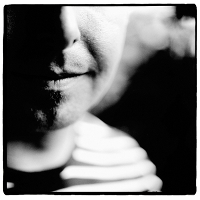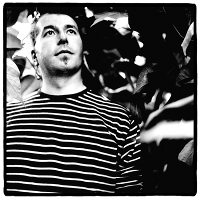
Welcome to Beltim's website !
The recording of the next album, entitled Le retour du cirque, is going on : twenty new tracks about childhood, the world of clowns and acrobats...
It will be published soon, just before Les autres, a disc that will include several re-recordings of old tunes but also some unreleased pieces.
Music
Les autres (to be released)
Les herbes folles - La rive - La promesse - La pluie - Les autres - Le rideau - La métamorphose - L'angle des miroirs - La fuite - Les yeux clos - L'heure du hibou - La guirlande - Le square
Flute, accordion, melodica, xaphoon, glockenspiel, piano, toy piano, percussion, bass, acoustic guitar, music and production : Marc-Albéric Lestage
Le retour du cirque (to be released)
L'invitation - La berceuse - La chambre - Le chapiteau - Le trouble-fête - Les portés - Le retour du cirque - La roulotte - La jongleuse - L'échappée belle - Le frein manouche - L'amour - L'imposture - La bestiole - Sous les arceaux - Les camelots - L'indélicatesse - La lettre - La canne à la main - La vérité nue
Flute, accordion, melodica, xaphoon, glockenspiel, kalimba, toy piano, percussion, bass, acoustic guitar, music and production : Marc-Albéric Lestage
L'échappée belle (2008)
L'ombre portée - La métamorphose - L'angle des miroirs - Le manège - La promesse - Le rendez-vous - La bonne étoile - Les yeux clos - Le chien errant - Le jour de l'an - La rive - La moldavanka - Le silence infernal - L'heure du hibou - L'attente - Les âmes
Flute, melodica, xaphoon, glockenspiel, percussion, acoustic guitar, music and production : Marc-Albéric Lestage
L'échappée belle is available on iTunes, Amazon, Quobuz, Deezer (digital version), and on Bandcamp (physical and digital version).
Biography
Beltim is a musical project initiated by the multi-instrumentalist Marc-Albéric Lestage whose first album, entitled L'échappée belle, has been released in november 2008.
Beltim was born from a simple idea : to work on small snapshots that emphasize the melodies, without being afraid to use shortcuts. To ignore styles and trends, under cover of an intuitive orchestration...
Through an unlikely combination of instruments, L'échappée belle is the first expression of this musical journey in which we will obviously recognize some familiar resonances, but also the immodest desire to tickle curious ears of the world.
From strange moods to quiet atmospheres, and from nostalgic tunes to convoluted themes, here are the first steps of an unclassifiable music always ready to be tamed.
Photos
Media
What is the history of Beltim ?
Beltim is a project I started during the summer of 2003, just after the end of my studies at the Atla School in Paris. The original idea was to create an instrumental repertoire mainly based on melodies.
Why Beltim ? Is there a special meaning behind this name ?
Beltim was the beginning of summer in the celtic year. Today, you can find multiple symbols in painting or literature which are directly linked to this event, but often in an unconscious way. This is the poetic aspect that interested me more than the word in itself, because of it's evocative power. And it is also a wink to the Berry, a country of witchcraft !
What are your musical influences ?
Christian Vander, Ian Anderson, Brendan Perry, John McEntire, Hungarian folk... Many instrumental music, or songs written in languages I can't speak. Which is very convenient when like me, you dislike singing in the shower !
Moreover, how would you describe your music ?
I'm not trying to play in a specific style, although it's always possible to cite references. Writing music is essentially a personal experience which has his source in ourselves. So I'm pleased to let the listeners give their own opinions on that matter...
After listening to your album, I wonder why the tracks are so short ?
You should have a look on Erik Satie's piano works, he's worse than me ! Joking aside, it is true that the disc is relatively short, but it is precisely because the pieces are all supposed to tell a story with a beginning, a development, some interludes and an end. I would also say that making a disc fom A to Z completely alone is not something easy, which is why, for a first attempt, it is better to create a lack rather than an overstatement.
Where does your inspiration come from ?
That's very difficult to explain. Are we really able to identify the origins of a work ? The inspiration is, or is not, simply ! And when she is there, the only thing to do is to work with, day after day. Koikispass n°14 - 2009 (interview by Enzo Petillault)
How do you define yourself artistically ?
The simplest way : as a musician ! Although it's a long-term work that implies, of course, creation, but also the knowledge of other musics as well as the meetings with other musicians... I'm not so sure to be able to stand back enough to define myself. Especially since my journey isn't done yet, and because I would have leisure to evolve again over time.
What is your musical background ?
I have begun to study music theory at the Municipal School of Bourges when I was eight years old. Two years later, as provided in the regulation, I was finally authorized to start playing the instrument that I've chosen (flute). At this time, I was only listening to Bach, Beethoven or Mozart (even if I've always disliked his work). As a teenager, I've been quickly fond of rock and especially its more extreme derivatives, which energy has pleased me immediately. So I've started learning bass guitar, setting up my first band and I've given up the flute ! Led to another, I've discovered, almost simultaneously, the two composers that have radically changed my view of music : Christian Vander and Ian Anderson. Their respective bands have just celebrated their forty years of career, and for me it is not a coincidence. A little later, at age of nineteen, I've enjoyed Malicorne and Gabriel Yacoub, which allowed me the opportunity to immerse myself in the musical heritage of my native region (Berry), but also into the European folk at large. Then I've gradually switched to acoustic music, through the guitar and also the flute again. Lately, I was interested in little-known instruments in France (xaphoon and kaval) that I intend to practice more seriously in the future. My instrumentalist path has followed the listener's one, but also the composer's one, given I've written my first song when I was sixteen, and I have almost never stopped since, with the evolution that we can guess !
What is your usual way (if you have one) to compose your pieces ?
There is no real method, if not the desire to be as responsive as possible to the music when she comes. The best tunes are always the clearest, i.e. those where the intention is expressed without equivocation or detours. In general, the best pieces are those written in a short time. But the writing process can be highly variable from one track to another. One constant, however : I do not care about harmony at all !
What is the concept behind Beltim ?
The eradication of Freemasonry in the local cyclist clubs if I remember well ... More seriously, there is no concept behind it, only many poetic symbols. It is this evocative aspect that attracted me, especially as it refers indirectly to the popular image of the Berry about witchcraft.
How would you define L’échappée belle ?
From a formal point of view, it is a suite of tunes that are linked together in a specific order. There is no overall theme, but I've tried to tell a story with a beginning, a development and an end. For the rest, I'm appealing to the subjectivity of the listener !
Basically, how would you like your music to be perceived ?
The only thing I wish is to be listened by the largest audience possible. I have nothing else to ask, even if I'm still fond of collecting opinions, whatever they are. As I am not linked to a particular style, and as we are today invaded by music from morning to evening, I believe that I can at least arouse some curiosity. If it goes beyond that, that's great ! Ethnotempos n°42 - 2009 (interview by Frédéric Gerchambeau)
Excerpts from L'échappée belle have been broadcast on the airwaves of Radionomy-TradCan (Belgium), IdFM-Radio Enghien (France), Radio Radiation (France), L'Eko des Garrigues (France), France Bleu Berry (France), Radio Gold (Italy), Radio Primitive (France), Radio Fajet (France), Alternantes FM (France), Radio Gets Wild (England), Happyday Newage Radio (South Corea), Suffolk 'n' Cool (England), Radio Nothing (Usa)...
"A very beautiful aerial album, refreshing synthesis of five years of musical research." L'Agitateur
"Sixteen timeless compositions, unclassifiable, almost magical, distilling a quiet good mood. A simple happiness." Le Canard Folk
"An atypical work, carefully built and totally mesmerizing." Le Zicazine
"This music is like the fox of Le Petit Prince, soft, exalted, easy to tame. A highly original musical project." La Bouinotte
"Sixteen fleeting pieces which permeate our memory. A beautiful album." Ethnotempos
"Instrumental music quite unclassifiable, nostalgic tunes, strange atmospheres and aerial climates." Médiathèque de la Communauté Française de Belgique
Legend
Also known as May Eve or the Night of the Walpurgis, Beltim marks the arrival of summer in the celtic year. It is traditionally celebrated on the eve of May 1st.
A time of unbridled merriment, Beltim was the celebration of the heart of spring and of life blossoming. At night fall, druids used to light up great fires on hilltops.
Through this magical ritual, they mimic the sun's light and call on it to triumph over a waning winter. Jumping between two fires was moreover supposed to attract prosperity as well as health for one's cattle.
In the countryside, young people used to spend the entire night making love in the woods whereas older couples were allowed to take off wedding rings (and forget the constraints that went with them).
In the morning, all would return to the village carrying huge bunches of hawthorn and gather to dance around the May tree. The latter represented the union between the Earth Goddess and the Sun God : the pole symbolised the God and the ribbons around it the Goddess.
Beltim was thus a celebration of flowers, fertility, sensuality and pleasure !




